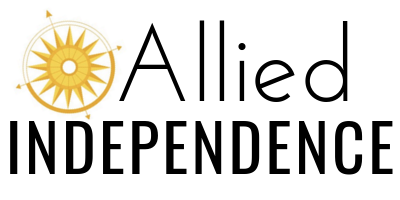Empowering Awareness and Independence: Celebrating White Cane Day!
What is White Cane Day?
Every year on October 15, we celebrate White Cane Day, a day dedicated to acknowledging the achievements and independence of people with visual impairments. This celebration falls within Blindness Awareness Month, a time to raise awareness about the rights and capabilities of individuals with visual impairments. As educators and advocates, it's our responsibility to foster understanding and inclusivity in our classrooms, helping students recognize that people with visual impairments can accomplish the same things as anyone else, albeit in different ways.
White Cane Day was established in 1964 when President Lyndon B. Johnson signed legislation recognizing the significance of the white cane as a symbol of independence for individuals with visual impairments. This day serves to celebrate their accomplishments and the tools that help them navigate the world. The white cane is not just a mobility aid; it's a powerful emblem of empowerment and self-sufficiency.
The Heart Behind the Celebration: Why We Honor White Cane Day
The purpose of White Cane Day goes beyond celebration; it's about advocacy and awareness. By honoring this day, we can help combat misconceptions about visual impairments and highlight the capabilities of those who live with them. Whether it's through education, community events, or personal stories, each celebration contributes to a greater understanding of what it means to be visually impaired.
Bringing the Celebration to Life: How to Make White Cane Day Special in Classrooms
Celebrating White Cane Day in the classroom doesn't require grand gestures. Here are three engaging ideas to help bring this important day to life for your students:
1. Start Small, Dream Big: Creative Personal Projects
Encourage your students to create personal projects that highlight their experiences or knowledge about visual impairments. Simple activities like making postcards, baking cookies with Braille decorations, or crafting pretzel sticks covered in white chocolate to resemble canes can be impactful. Students can distribute these items while sharing what it means to have a visual impairment. These small acts foster understanding and encourage dialogue.
2. Unite and Celebrate: Fun Group Activities
For a more communal celebration, consider organizing a group activity. Whether it’s a class-wide event or a larger gathering with the whole school, there are numerous possibilities. A simple blindfold activity can help students gain a better understanding of the challenges faced by their peers. For example, they could prepare a snack while blindfolded, promoting teamwork and communication. Students with visual impairments can also demonstrate techniques like the guide technique, empowering them to share their experiences and advocate for themselves.
3. Think Big: Planning Impactful Events for Awareness
If you're looking to plan a more extensive celebration, consider creating T-shirts, organizing crafts, or even starting a pen pal project with other classrooms. You could have students share their experiences over the school announcements or invite a guest speaker to discuss the importance of the white cane. Engaging the entire school in these activities amplifies the message of awareness and inclusivity.
Let’s Play and Learn: Interactive Activities for Everyone
To make learning about White Cane Day even more fun, consider incorporating interactive activities like games. For example, creating a true-or-false quiz about visual impairments can be an engaging way to spark conversation and curiosity among students.
Join the Movement: Making Every Day a Celebration of Inclusion
As we celebrate White Cane Day, let's remember the importance of spreading awareness and understanding within our classrooms. By engaging in thoughtful discussions and activities, we can help our students appreciate the achievements of individuals with visual impairments and recognize their potential. Share your celebration ideas and experiences with fellow educators, and let's work together to foster a more inclusive environment for all learners.
By taking these steps, we not only honor White Cane Day but also contribute to a more informed and compassionate society.
Topics: White Cane Day, visual impairments, awareness month, blindness awareness, teaching strategies, independence for individuals with visual impairments, classroom activities, advocacy for visual impairments, inclusive education, engaging activities, empowering learners, white cane, community events, orientation and mobility, orientation and mobility specialists, students with visual impairments
